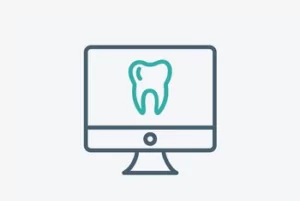In the sprawling digital expanse, amidst the myriad of businesses vying for attention, dental practices often grapple with the challenge of ensuring they don’t just become another face in the crowd. Enter SEO—a potent arsenal in the digital marketing world, poised to propel any dental practice from obscurity to the spotlight.
But as with any dynamic domain, the digital milieu is perpetually evolving. The digital strategies that yielded results yesterday may not necessarily do the trick today. Hence, mastering the ‘best practices for SEO’ is not just advantageous but quintessential for any dental practice aiming to outshine its competitors and establish a formidable online presence.
Understanding the Landscape of Search Engines
To navigate the intricate labyrinth of SEO, it’s imperative first to acquaint oneself with the terrain—search engines. Think of them as the vast libraries of the digital world. Google might be the grandest of them all, but let’s not forget the likes of Bing, Yahoo, and other search engines, each with their unique nuances.
At their core, these search engines operate using intricate algorithms. These algorithms are like the librarians, sorting, categorising, and presenting information to users based on relevance, quality, and many other factors.
When a user enters a query, such as “emergency dental services in Perth”, these algorithms sift through countless web pages, selecting and ranking them on their search engine results pages (SERPs). This is where the magic happens.
If your dental practice secures a coveted spot on these SERPs, especially the upper echelons, it’s akin to striking gold. It can result in an increase in organic traffic, translating into increased inquiries, bookings, and, ultimately, a thriving patient base.
However, the journey to the pinnacle of SERPs isn’t straightforward. It requires a blend of art and science, demanding a deep understanding of how these algorithms function, the ever-evolving ranking factors they prioritise, and your target audience’s specific needs and preferences.
It’s this intricate dance between optimising for search engine crawlers and catering to real human users that defines the ‘best practices for SEO’. For dental practices, this journey is all the more crucial, as a prime spot on SERPs can be the difference between a flourishing clinic and one struggling to attract patients.
At the heart of every triumphant SEO campaign lies the intricate keyword research process. Imagine it as the map guiding your SEO journey, delineating the paths and terrains you must conquer. This involves a meticulous process of pinpointing not just any keywords but those gems that potential patients are most likely to input in their search queries. Phrases such as “affordable root canal in Perth” or “emergency dental services in Adelaide” are gold mines in the dental SEO landscape.
But how does one uncover these treasured terms? Enter the Google Search Console and an array of specialised SEO tools. These platforms serve as your compass, revealing insights into which keywords your target audience gravitates towards, enabling you to craft content that aligns precisely with their needs and search intent.
Crafting Compelling Title Tags and Meta Descriptions
In the vast sea of search results, the lighthouse of your title tag and meta description beckons users to your shores. These critical elements serve a dual purpose: they communicate to search engines about your page’s content and act as a persuasive snippet to entice users to navigate to your site.
Imagine the title tag as the headline of your page’s story. An engaging one infused with the target keyword – for example, “Award-Winning Orthodontic Services in Brisbane | ABC Dental” – can considerably elevate click-through rates. Meanwhile, the meta description acts as the blurb, providing a tantalising glimpse of the story ahead. It should be brief yet captivating, encouraging users to delve deeper into your content.
On-Page SEO: Where Quality Meets Relevance
Each web page is akin to an individual chapter of your website’s story, and on-page SEO ensures each chapter is both riveting and relevant. This means churning out premium content that not only quenches the thirst for information but also resonates with readers. For dental clinics, this could translate to a comprehensive guide on managing dental anxiety or a video tutorial on the proper flossing technique.
Beyond the content, the magic lies in the finer details. The judicious use of relevant keywords, a web of internal links leading users to other pertinent pages, and a pristine HTML code free of errors all contribute to a page’s allure in the eyes of search engine crawlers.
And let’s not sideline the influential role of internal linking. This technique serves as the connective tissue of your website, guiding visitors through a curated journey and signalling to search engines the structure and significance of your content.
The Speed of Success: Why Page Speed Matters

And each abandonment doesn’t just represent a lost potential patient; it’s a dent in your search rankings. Platforms like Google Analytics play a crucial role here, shedding light on your site’s performance metrics and highlighting areas ripe for optimisation.
Optimising for Mobile: Mobile SEO
The digital world has shifted from desktops to the palm of our hands. With the lion’s share of searches now originating from smartphones and tablets, a mobile-optimised website isn’t just a feather in your cap—it’s your armour in the battle for search engine supremacy.
A mobile-responsive site that fluidly adjusts to different screen sizes and orientations is paramount. It elevates the user’s experience, ensuring smooth navigation, quick load times, and legible content. As with most things that enhance the user experience, search engines, especially the behemoth Google, sit up and take notice, often rewarding such sites with better rankings.
Harnessing Google’s Arsenal: Google Search Console and Google Analytics
The universe of SEO is vast, and while the digital realm presents many tools to navigate this cosmos, none are as critical as Google’s own offerings: Google Search Console and Google Analytics. Together, they create a formidable duo, arming dental practices with insights and data-driven recommendations for achieving digital brilliance.
The Google Search Console is like the health check-up tool for your website. It’s the doctor’s stethoscope for any dental practice’s online presence. With it, website owners can gain insights into which keywords drive traffic to their site, how they rank in search results, and which web pages are the most popular.
But beyond these metrics, Google Search Console proactively alerts administrators to any potential issues, such as crawl errors or security concerns. These alerts can be invaluable for dental websites aiming for seamless user experience, offering immediate fixes before a patient encounters an issue.
Google Analytics is a comprehensive data and analytics platform on the other side of the spectrum. Think of it as the MRI scan of your site, offering an in-depth look at its performance. The insights are endless, from understanding where your organic traffic originates (be it Google search, other search engines, or referrals from other sites) to demystifying user behaviour on your site.
Want to know which blog post about dental hygiene resonates most with visitors? Google Analytics can tell you. Are you curious about the bounce rate on your appointment booking page? It’s got that covered, too. For dental practices, both tools combined offer a holistic view. By understanding what’s working and what’s not, practices can refine their SEO strategy, ensuring they climb the search engine rankings and offer an unparalleled user experience to potential patients.
Building Bridges: The Power of Link Building
In the intricate web of SEO, links are the threads connecting this vast ecosystem. And, while internal links act as the veins, ensuring proper flow and structure, external links or backlinks are the heartbeats, pumping credibility and authority into a site.
Backlinks are the digital world’s version of word-of-mouth endorsements. Especially for dental practices, earning a link from a respected health magazine, a renowned dental association, or even a testimonial from a well-known oral health expert can significantly bolster a site’s reputation in the eyes of search engine crawlers.
But, as with many things in life, it’s quality over quantity that reigns supreme. Acquiring a multitude of low-quality links could harm your SEO efforts and, worse, even lead to penalties from search engines. Instead, dental practices should focus on fostering genuine relationships, producing high-quality content that others naturally want to link to, and seeking partnerships with reputable platforms in the health and dental sectors.
Staying in Sync with Search Intent
SEO has evolved from mere keyword stuffing to understanding the very essence of a user’s query. It’s the shift from merely “what” users are typing to “why” they’re searching. Search intent is this very “why.” It’s the motive behind every search query.

Dental practices can ensure they’re serving the right content to the right audience by aligning web pages with specific search intent. This synchronisation not only enhances user satisfaction but also boosts conversions.
After all, if a user lands on a blog post perfectly addressing their query about toothache remedies, they’re more likely to trust the dental practice that provided that valuable information, potentially leading to a future appointment booking.
Continuous Adaptation: The Ever-Evolving Nature of SEO
In today’s rapidly changing digital landscape, the saying, “the only constant is change,” couldn’t be more accurate. For those relying on online visibility, especially dental practices, recognising and adapting to these shifts is more than just a strategy—it’s necessary for survival and growth.
Search engine algorithms aren’t static. Giants like Google continuously tweak their algorithms so users can receive the most accurate and relevant search results. This evolving nature means that SEO techniques that garnered results last year might be obsolete or less effective today. It’s this fluid nature that makes SEO both exciting and challenging.
Moreover, user preferences and behaviours adapt as new technological advancements and trends emerge. The migration from desktop browsing to mobile search, the increasing reliance on voice search, and the integration of AI in search queries are just a few examples of how user patterns have evolved in recent years.
For dental practices, the challenge is twofold. Firstly, understanding the specific SEO needs and preferences of their target audience—patients looking for dental services—and secondly, aligning their online presence and content strategy with these evolving needs.
This continual evolution underscores the importance of a proactive approach. Regularly auditing your website, keeping abreast of industry news, and perhaps most critically, viewing SEO not as a one-off task but as a long-term commitment are all essential. Dental practices should be agile, willing to pivot their strategies based on current best practices, and always have their finger on the pulse of both the SEO world and the dental industry.
Utilising Google Images and Google Business Profile
In an age where visuals can speak louder than words, the importance of imagery, especially for a field as visual as dentistry, cannot be overstated. Google Images offers a platform where potential patients might seek visual references for dental procedures, before-and-after shots, or even dental equipment.
Optimising for Google Images isn’t just about uploading high-resolution photos. It requires careful selection of relevant file names, adding descriptive alt texts, and ensuring images are optimised for swift loading times.
For a dental practice, this could mean naming an image “teeth-whitening-procedure-Sydney” instead of a generic “IMG_001”. This improves search engine rankings and enhances the user experience for patients looking for specific dental services.
On the other hand, the Google Business Profile (previously known as Google My Business) is a potent tool for local SEO. This platform allows dental practices to list their services, display reviews, provide contact information, and even share updates. When optimised correctly, your profile acts as a digital storefront on search results, capturing local patients actively seeking dental services.
Imagine a potential patient in Brisbane searching for “emergency dental services near me.” If a Brisbane-based dental clinic has an optimised Google Business Profile, it’s more likely to appear prominently in the search results, attracting that lead. Ensuring that all information is up-to-date, reviews are actively managed, and any patient queries on the platform are swiftly addressed is essential.
By effectively harnessing Google Images and Google Business Profile, dental practices can improve their online visibility and build trust and credibility among prospective patients in their locale. You can also pay to be featured in Google ads for a spot on the first page.
In Conclusion
While the SEO best practices provide a robust framework, remember that SEO is as much an art as it is a science. It’s about understanding search engine crawlers and human users alike. For dental practices, this means crafting a strategy that resonates with potential patients, offering them not just dental services but valuable content, seamless experiences, and the promise of care.
Are you ready to elevate your dental practice in the digital sphere? Mediboost is here to assist. As experts in the domain, we understand the unique challenges dental practices face. Let us guide you, ensuring your practice achieves visibility and becomes a beacon of trust and excellence. Reach out to Mediboost today, and let’s craft a digital future that’s not just promising but thriving.
References:
https://crp.trb.org/seo-best-practices/





